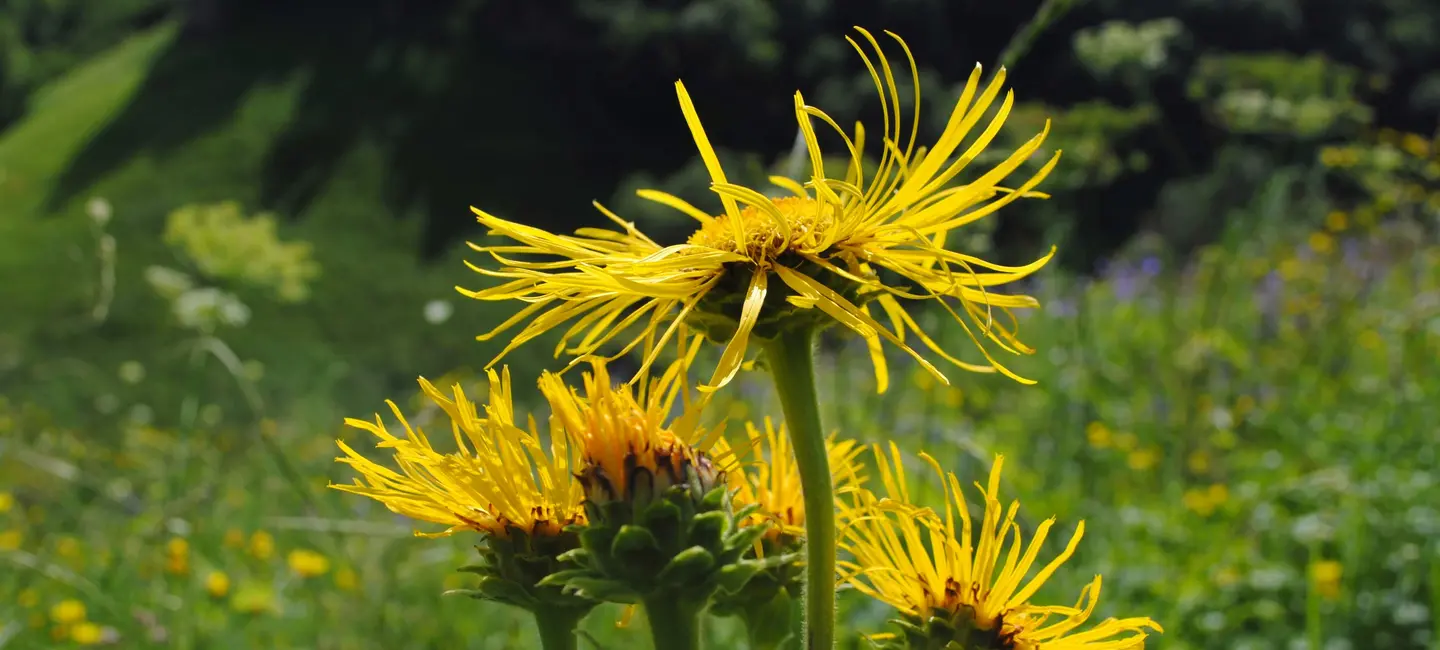
Alpine ragwort is a plant. The parts that grow above the ground are used to make medicine.
Despite serious safety concerns, people take alpine ragwort to treat diabetes, high blood pressure, and spasms. It is also used to control bleeding, especially after tooth extraction.
Some women use it to cause the uterus to contract.
Don’t confuse golden ragwort (Senecio aureus) with alpine ragwort. Both are sometimes called “squaw weed.”
Is It Effective?
NatMed Pro rates effectiveness based on scientific evidence according to the following scale: Effective, Likely Effective, Possibly Effective, Possibly Ineffective, Likely Ineffective, Ineffective, and Insufficient Evidence to Rate.
- Diabetes.
- High blood pressure.
- Uncontrolled bleeding.
- Spasms.
- Other conditions.
More evidence is needed to rate the effectiveness of alpine ragwort for these uses.
Is it Safe?
There's not enough information to know how alpine ragwort might work.
There’s a lot of concern about using alpine ragwort as medicine, because it contains chemicals called hepatotoxic pyrrolizidine alkaloids (PAs), which may block blood flow in the veins and cause liver damage. Hepatotoxic PAs might also cause cancer and birth defects. Alpine ragwort preparations that are not certified and labeled “hepatotoxic PA-free” are considered UNSAFE.
It’s also UNSAFE to apply alpine ragwort to broken skin. The dangerous chemicals in alpine ragwort can be absorbed quickly through broken skin and can lead to dangerous body-wide toxicity. Steer clear of skin products that aren’t certified and labeled “hepatotoxic PA-free.” There isn’t enough information to know if it’s safe to apply alpine ragwort to unbroken skin. It’s best to avoid use.
Special Precautions & Warnings:
Pregnancy and breast-feeding: It’s UNSAFE to use alpine ragwort preparations that might contain hepatotoxic PAs during pregnancy. These products might cause birth defects and liver damage.
It’s also UNSAFE to use alpine ragwort preparations that might contain hepatotoxic PAs if you are breast-feeding. These chemicals can pass into breast-milk and might harm the nursing infant.
It’s not known whether products that are certified hepatotoxic PA-free are safe to use during pregnancy or breast-feeding. Stay on the safe side and avoid using any alpine ragwort preparation if you are pregnant or breast-feeding.
Allergy to ragweed and related plants: Alpine ragwort may cause an allergic reaction in people who are allergic to the Asteraceae/Compositae plant family. Members of this family include ragweed, chrysanthemums, marigolds, daisies, and many others. If you have allergies, be sure to check with your healthcare provider before taking alpine ragwort.
Liver disease: There is concern that the hepatotoxic PAs in alpine ragwort might make liver disease worse. Stay on the safe side and avoid using any alpine ragwort preparation if you have liver disease.
Medications that increase break down of other medications by the liver (Cytochrome P450 3A4 [CYP3A4] inducers)
Interaction Rating=Moderate Be cautious with this combination.
Alpine ragwort is broken down by the liver. Some chemicals that form when the liver breaks down alpine ragwort can be harmful. Medications that cause the liver to break down alpine ragwort might enhance the toxic effects of chemicals contained in alpine ragwort.
Some of these medicines include carbamazepine (Tegretol), phenobarbital, phenytoin (Dilantin), rifampin, rifabutin (Mycobutin), and others.
Herbs that increase breakdown of alpine ragwort by the liver (cytochrome P450 3A4 [CYP3A4] inducers): Alpine ragwort is broken down by the liver. Some chemicals that form when the liver breaks down alpine ragwort can be harmful. Other herbs that cause the liver to break down alpine ragwort might increase the toxic effects of the chemicals contained in alpine ragwort. Some of the herbs are echinacea, garlic, licorice, St. John's wort, and schisandra.
Pyrrolizidine alkaloids (PAs)-containing herbs and supplements: Alpine ragwort contains PAs, dangerous chemicals that can harm the liver. Using it along with other herbs that also contain this dangerous chemical might increase the chance of developing serious side effects, including liver damage and cancer. Other herbs that contain hepatotoxic PAs include alkanna, boneset, borage, butterbur, coltsfoot, comfrey, forget-me-not, gravel root, hemp agrimony, hound's tongue, dusty miller, groundsel, tansy ragwort, and golden ragwort.
There are no known interactions with foods.
The appropriate dose of alpine ragwort depends on several factors such as the user's age, health, and several other conditions. At this time there is not enough scientific information to determine an appropriate range of doses for alpine ragwort. Keep in mind that natural products are not always necessarily safe and dosages can be important. Be sure to follow relevant directions on product labels and consult your pharmacist or physician or other healthcare professional before using.
Ragwort, Senecio Herb, Senecio nemorensis, Séneçon des Bois, Séneçon des Forêts, Séneçon des Sarrasins, Séneçon Hercynien.
Information on this website is for informational use only and is not intended to replace professional medical advice, diagnosis, or treatment. While evidence-based, it is not guaranteed to be error-free and is not intended to meet any particular user’s needs or requirements or to cover all possible uses, safety concerns, interactions, outcomes, or adverse effects. Always check with your doctor or other medical professional before making healthcare decisions (including taking any medication) and do not delay or disregard seeking medical advice or treatment based on any information displayed on this website.
© TRC Healthcare 2024. All rights reserved. Use and/or distribution is permitted only pursuant to a valid license or other permission from TRC Healthcare.
